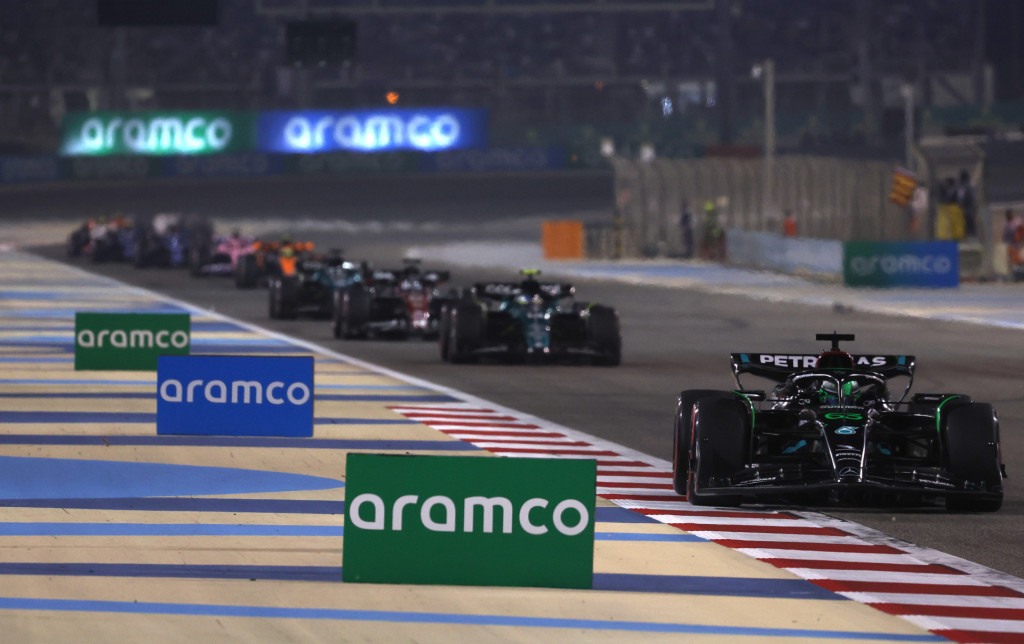Current Formula 1 engines generate up to 1,000 hp from just 1.6 litres of variation, and now Engineering Explained has video clip damaging down the details that make that feasible.
Technically, Formula 1 vehicles have “power devices,” not “engines,” as the 1.6-liter turbocharged V-6 is just one component of a crossbreed powertrain. Because 2014, F1 has actually mandated a configuration that consists of the small 90-degree V-6 and two motor-generator systems, the MGU-K (Motor Generator Unit-Kinetic) and MGU-H (Motor Generator Unit-Heat).
Both motor-generator devices gather power, yet in different methods. The MGU-H is spun by excess exhaust circulation from the turbo that would generally be bled off by a wastegate, gathering energy that can be stored in a battery pack, used to spin the turbo when off throttle, or sent out straight to the MGU-K. Affixed to the crankshaft, the MGU-K can supply up to 160 hp to assist push the car or regenerative braking to recover more energy.

< img name =" tccimg_100876645_m" title=" 2023 Formula 1 Bahrain Grand Prix
”
src= “http://abcdrivered.com/wp-content/uploads/2023/12/how-f1-engines-make-1000-hp.jpg” alt =” 2023 Formula 1 Bahrain Grand Prix “width =” 640″ elevation= “402” class=” first_image lazy “data-width= “1024” data-height=” 644″ data-url =” http://abcdrivered.com/wp-content/uploads/2023/12/how-f1-engines-make-1000-hp.jpg” data-src-h=” https://images.hgmsites.net/hug/2023-formula-1-bahrain-grand-prix_100876645_h.jpg” data-src-l =” http://abcdrivered.com/wp-content/uploads/2023/12/how-f1-engines-make-1000-hp.jpg” data-src-m= “https://images.hgmsites.net/med/2023-formula-1-bahrain-grand-prix_100876645_m.jpg” data-src-s= “https://images.hgmsites.net/sml/2023-formula-1-bahrain-grand-prix_100876645_s.jpg” > 2023 Formula 1 Bahrain Grand Prix. With simply 160 hp supplied by the MGU-K, and just basically bursts when the battery pack is totally billed, the fuel engine is still doing most of the job. It additionally has to do that with a restricted amount of gas (due to the fact that F1 doesn’t enable in-race refueling anymore) pumped from the fuel cell at a flow price determined by the rules. That rate– an optimum 100 kg/h– additionally implies that while F1 permits engines to rev to 15,000 rpm, power effectively peaks at 10,500 rpm, since that’s when engines struck that maximum rate.
Groups claim the gas used in F1 is similar to pump fuel, so they aren’t getting a benefit there. F1 engines are recognized to run a lot more effectively than common road-car engines, nonetheless. Mercedes-AMG has claimed its engines have actually accomplished greater than 50% thermal performance, implying at least half the potential power in the fuel they burn is in fact used to relocate the auto. That’s the crucial to those large power numbers.
Thinking about that a lot of road-car internal-combustion engines battle to accomplish 35% thermal efficiency, F1 designers have to utilize plenty of techniques. One is pre-chamber ignition– making use of a smaller combustion chamber over the major chamber– which allows for a leaner air-fuel mix that’s preferably fit to F1’s fuel-flow limits. This function isn’t racing-specific; it was just one of the attributes that made the original Honda Civic’s CVCC engine so fuel-efficient, and it’s currently utilized in Maserati’s 3.0-liter twin-turbo V-6.
Another performance increase is a guideline that permits compression ratios of as much as 18:1. That’s a lot higher than road-car engines, and while it’s unidentified whether groups are really hitting that restriction, it leaves area for performance gains. Higher compression ratios are extra reliable, and even without running completely to an 18:1 ratio, F1 autos are most likely running greater compression ratios than road cars and trucks and reaping that advantage.
The last factor is turbo boost. In roadway cars, high degrees of boost help small engines create huge power, however it may not be that basic in F1. F1 engines may run more or less increase than some road vehicles (groups do not release real figures) depending on the air-fuel proportion, which could additionally change based upon circuits, with more boost made use of at higher-altitude Mexico City, as an example.
Ultimately, it’s the efficiency of the overall package that permits F1 power systems to obtain a lot power from so little displacement. As kept in mind in the video, they additionally do it without some functions that prevail on road autos, such as variable valve timing. That’s what makes contemporary F1 power devices real technical marvels.
Look into the video clip above for a deeper dive on what makes F1 engines tick.
Be First to Comment